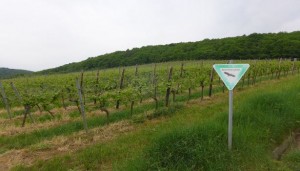In this post, Carsten Brühl provides a poster on amphibian ecotox his group presented.
“Patrick Lenhardt presented his work on amphibians relating to population genetics and pesticide use at the annual conference of SETAC in Barcelona this year. The poster was well attended and triggered also discussion in the meeting of the amphibian and reptile working group of SETAC. A manuscript of the results is currently prepared and forms a part of Patricks thesis.
The poster can be downloaded via the link below:
Poster Genetic effects pesticides Lenhardt SETAC Barcelona 2015
See for more details also the abstract to this poster:
Are pesticides a factor for genetic differentiation of amphibian populations?
Decreasing habitat availability as well as habitat fragmentation and environmental pollution by agricultural chemicals are among the major causes for the observed global amphibian decline. It is necessary to understand how anthropogenic land use influences habitat suitability and amphibian migration. This includes migration between different terrestrial and aquatic habitat patches as part of the natural life cycle of amphibian species as well as genetic exchange between populations and colonization of new habitat patches through dispersal. During migrations over arable land exposure to agro chemicals, such as fertilizers and pesticides, is likely. Due to their skin properties, amphibians are highly susceptible for chemical uptake, which can cause lethal or sub lethal effects.
We sampled eight breeding sites of Rana temporaria in the winegrowing area of Palatine and adjacent forest (Rhineland-Palatine, Germany). Genetic differentiations (pairwise FST values) were calculated based on ten microsatellites. Pairwise FST values between agricultural breeding sites were significantly higher (0,059 ± 0,019) than forest populations (0,028 ± 0,009). Our statistical analysis showed no significant correlation of the pairwise FST values between agricultural breeding sites with established factors for genetic differentiation, like geographic distance and traffic intensity on roads between populations, neither solely nor in combination.
Pesticides might therefore be an additional factor causing the fragmentation of breeding sites. Recent laboratory studies showed high toxicity of commonly used pesticides to terrestrial amphibians at field application rates. Therefore, field cultivation and in particular pesticide applications may create a sink for populations during terrestrial activity. In combination with reproduction failure and decreased connectivity between habitats as well as populations, pesticides may promote local amphibian extinction.“

